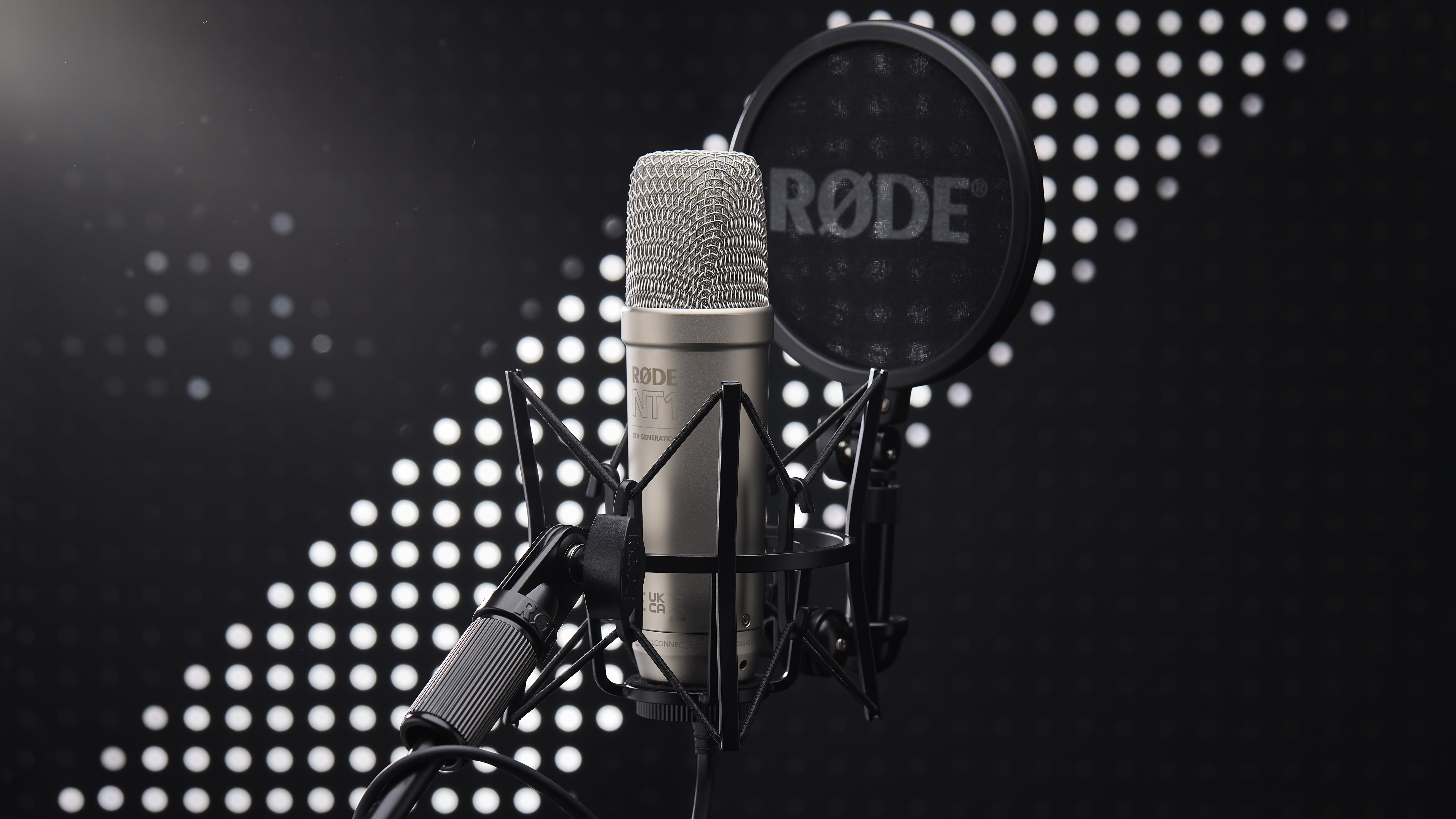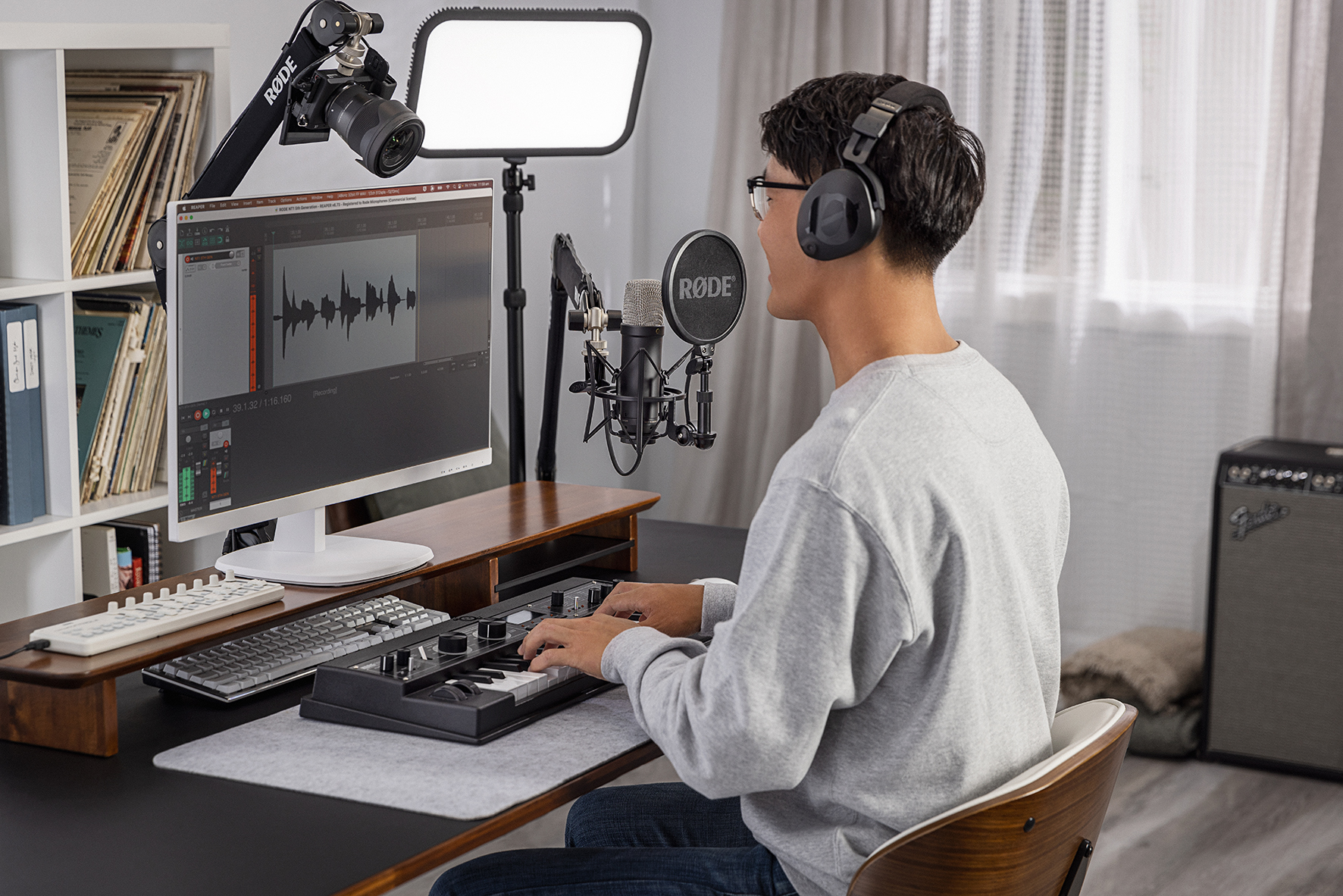
There are few products in music technology that have such a long and illustrious history as the RØDE NT1 studio condenser microphone.
Introduced in 1992, it has since sold over 6 million units and become the world’s most popular studio mic. The brand’s very first microphone, the NT1 swiftly became RØDE’s flagship product, adored for its rich, characterful sound, high sensitivity, low self-noise and impressive reliability.
After the second iteration was released in the mid-’90s, RØDE released the NT1-A in 2002, a 10th anniversary edition that still sits proudly in their product range today. In 2014, RØDE redesigned the NT1 from the ground for a fourth generation that saw an array of modern features integrated into the classic design. Now, almost ten years later, RØDE turns the page on a new chapter with the next evolution in the microphone’s lineage: the RØDE NT1 5th Generation.
The RØDE NT1 5th Generation builds on the towering legacy of its predecessors to create what they’ve justifiably crowned the “ultimate studio microphone”. Preserving the top-tier performance and sound quality demonstrated by previous generations, the NT1 5th Generation adds a raft of state-of-the-art features that promise to revolutionize the way that creators of all kinds work with audio.

One of the most impressive of these features is RØDE’s game-changing Dual Connect output. Delivering the XLR connection you’d expect from the NT1, Dual Connect integrates a USB-C connection within the same housing as the XLR, giving the user the versatility of a USB connection without compromising the usability or fidelity of the analogue XLR output. Multiple NT1 5th Generations can even be connected over USB with RØDE Connect for complex sessions that require numerous sources to be captured at once. It’s innovations like these that help the RØDE NT1 5th Generation set a new standard for studio microphones.
Another innovation at the heart of the RØDE NT1 5th Generation is the studio-grade audio interface that’s built directly into the microphone itself. Making the NT1 truly “plug-and-play”, this means the user can run the microphone directly into their DAW through a USB-C cable and begin recording without the extra step of hooking up XLR cables or an audio interface. The NT1’s interface is equipped with high-resolution, 192kHz A/D converters and a high-gain Revolution Preamp that’s optimized to reduce noise and provide crisp, transparent recordings.
The RØDE NT1 5th Generation gives music-makers more creative possibilities than ever before thanks to APHEX® audio processing, powered by the microphone’s onboard DSP. Using the free RØDE Connect and RØDE Central companion apps, creators can fine-tune their sonics through a variety of software-based tools, including compression, high-pass filter, noise gate and the iconic APHEX® Aural Exciter™ and Big Bottom™ plugins. Vocalists can also utilize the powerful VoxLab™ editor to quickly and easily perfect their vocal recordings.

Perhaps the most exciting and innovative feature that the RØDE NT1 5th Generation boasts is its 32-bit float digital output. As the first studio condenser microphone to make use of 32-bit float recording, the NT1 5th Generation is truly groundbreaking. This phenomenal audio format allows for an expanded dynamic range in audio levels as compared to the conventional 16 or 24-bit format used by the majority of contemporary audio gear.
What this means for music-makers is that clipping an input signal essentially becomes impossible: there’s no longer any need to set the gain prior to recording, and everything from a whisper to a shout can be successfully recorded using the same settings. The NT1 5th Generation’s 32-bit float output just made the recording process faster, easier and more hassle-free than ever before.
The RØDE NT1 5th Generation is manufactured by RØDE’s audio experts entirely in Australia, the country where the brand was founded. Every RØDE NT1 5th Generation comes bundled with a studio-grade shock mount, pop filter and premium XLR and USB-C cables.
Find out more about the RØDE NT1 5th Generation on RØDE’s website.







